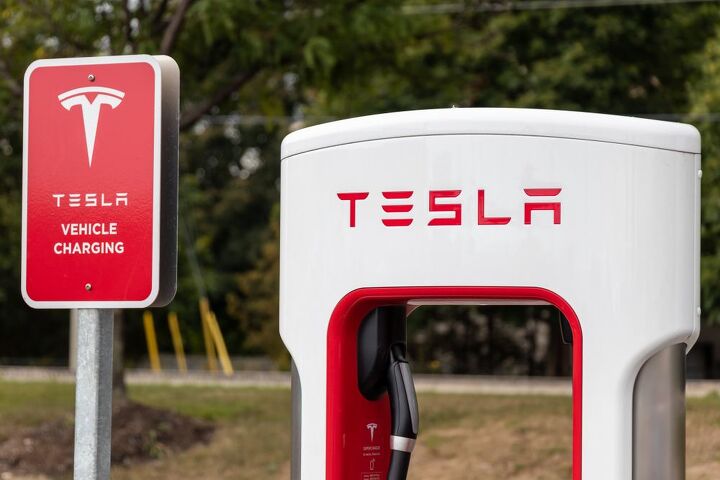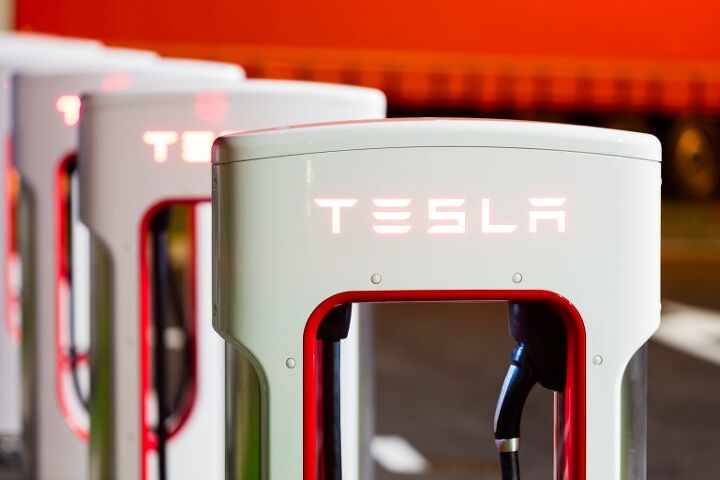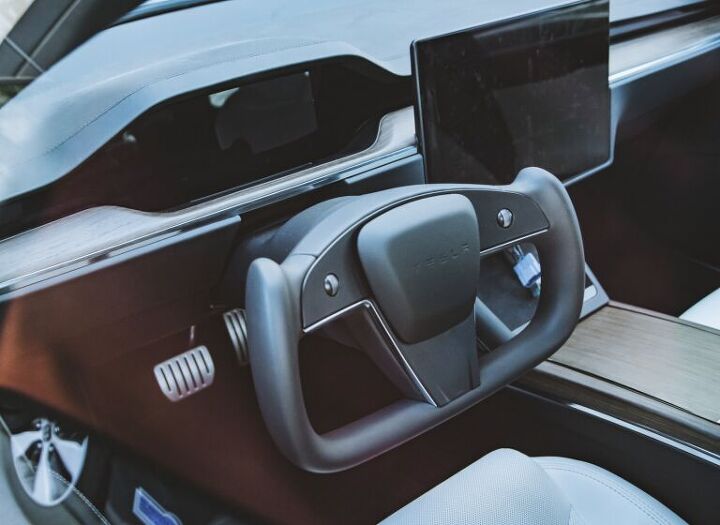#TeslaMotors
Tesla Removes Full Self Driving Beta Over 'Issues'
Tesla Inc. pulled its Full Self Driving (FSD) beta off the table over the weekend, with CEO Elon Musk stating that testers had been “seeing some issues with [version] 10.3.”
To remedy the issue, the company has reverted back to FSD 10.2 temporarily. Musk made the announcement over social media on Sunday morning. The following day, he had already promised that version 10.3.1 would be coming out to address problems encountered during the exceptionally short public testing phase.
“Please note, this is to be expected with beta software,” the CEO noted. “It is impossible to test all hardware configs in all conditions with internal QA, hence public beta.”
Tesla Officially Moving to Texas, Elon Musk Confirms Austin HQ
Tesla CEO Elon Musk has officially announced that his company would be moving house this week. Currently nestled upon the bosom of Silicon Valley in Palo Alto, CA, the automaker has expressed its intent to establish a new base of operations in Austin, TX. While this situation has been a long time coming, it’s not quite the prompt walkout that everyone was predicting 17 months ago.
At the start of the pandemic, Musk found himself at odds with local officials pushing strict COVID lockdowns. The CEO had wanted to keep the all-important Fremont facility up and running at the start of 2020, suggesting workers could simply choose to stay home without there being any negative repercussions (or pay). Told again to shut down, Tesla sued Alameda County on the grounds that its orders were unconstitutional and violated a return-to-work mandate recently issued by Governor Gavin Newson. Before long, Elon Musk was openly confessing he was fed up with the state of California and would be relocating the business.
Opinion: Tesla's Full-Self Driving Beta Is a Bad Joke
Earlier this week, Elon Musk announced that Tesla would begin offering the Full Self-Driving (FSD) Beta to testers that had achieved sufficiently high marks in its new “safety score.” While company has repeatedly promised to launch FSD in earnest, which costs $10,000 to purchase or $199 a month to rent (depending on which version of Autopilot you’re using), the system has been habitually delayed from getting a widespread release. This has upset more than a few customers operating under the assumption that having bought into the service actually meant something.
That said, the rollout has technically begun and continues encompassing more users. But regulators are annoyed that the company is now testing FSD’s functionality on thousands of paying customers and the terms in which Tesla is offering FSD has changed in a manner that makes your author extremely uncomfortable. The automaker originally intended to provide the system via a simple over-the-air (OTA) update as availability expanded. However Tesla now has a button allowing drivers to request FSD by opening them up to a period of scrutiny where their driving is digitally judged. Despite your having already shelled out cash for it, access to the beta is determined by the manufacturer’s safety score.
Twist: NHTSA Tesla Autopilot Probe Now Includes Other Automakers
The National Highway Traffic Safety Administration (NHTSA) has been doing a deep dive into Tesla’s Autopilot to determine if 765,000 vehicles from the 2014 model year onward are fit to be on the road. We’ve covered it on numerous occasions, with your author often making a plea for regulators not to harp on one company when the entire industry has been slinging advanced driving aids and distracting infotainment displays for years.
Apparently someone at the NHTSA either heard the blathering, or was at least of a similar mind, because the organization has expanded its investigation to include roughly a dozen other automakers.
NHTSA Identifies 12th Autopilot Related Crash Involving Emergency Vehicles
The U.S. National Highway Traffic Safety Administration (NHTSA) has identified another traffic incident pertaining to Tesla’s driver assistance features and emergency vehicles, making the current tally twelve. These wrecks have been a matter of focus for the agency ever since it opened a probe to determine whether or not Autopilot can handle hiccups in the road caused by scenes where flares, cones, disabled automobiles, and first responders coalesce.
Though concerns remain that Tesla is being singled out unjustly when there’s little evidence to suggest that other manufacturers are providing more capable systems. Tesla’s issues appear to be heavily influenced by irresponsible marketing that makes it seem as though its vehicles are self-driving when no manufacturer can make that claim. U.S. regulators now want to place more restrictions on vehicles boasting autonomous features and, thus far, Tesla has been behind on those trends. But it’s hard to support claims that they make vehicles safer when none seem as effective as they should be.
NHTSA Resumes Inquisition of Tesla Autopilot
The National Highway Traffic Safety Administration (NHTSA) has been keeping tabs on Tesla’s Autopilot for years, sometimes giving crashes involving the system a bit more attention than they otherwise would have. But the extra scrutiny seemed to dissipate as practically every automaker on the planet introduced their own advanced driving suites and Telsa seemed to preemptively adhere to fast-approaching government regulations (and industry norm) by introducing driver-monitoring cameras.
On Friday, the NHTSA returned to business as usual and announced it had opened a preliminary evaluation of Autopilot to determine if there were any problems with the system. The agency has claimed it received at least 11 verifiable crash reports since 2018 where a Tesla product struck at least one vehicle that was already at the scene of an accident. It’s sort of a weird metric but allegedly worthy of the NHTSA wanting to look into every model the company produced between 2014 and 2021. However, actually reading the report makes it sound like the agency is more preoccupied with how Tesla’s system engaged with drivers, rather than establishing the true effectiveness of Autopilot as a system.
Tesla Cybertruck Delayed Until 2022
Tesla’s Cybertruck has been delayed. The automaker updated its online vehicle configurations to reflect that the model will no longer be arriving in 2021. The pickup’s new launch date is set for sometime in 2022, with no hints on what part of the year the company plans on getting the assembly lines humming.
Though there’s little reason to get bent out of shape. Tesla has always been notorious for delaying vehicles and the automotive sector is currently in a state where you’d probably be more shocked to learn that Cybertruck was arriving on time. Besides, Tesla now has more time to dangle the model in front of consumers as a way to keep itself relevant.
Tesla Keeps Raising Prices for U.S. But Not China
This year has already seen price increases across the board, thanks largely to the supply crisis created in the wake of our response to the pandemic. As it turns out, shutting down the global economy wasn’t ideal for maintaining business as usual and nobody in charge seems all that interested in returning things to normal. Automotive prices have become particularly troublesome, as manufacturing costs have risen and a deficit of product has made this a seller’s market.
Tesla has been raising rates all year, particularly on its higher-volume models. By June, price bumps had become so common with the brand that CEO Elon Musk had to address the matter. He blamed industry-wide supply chain pressures, noting that raw materials had become particularly costly. While a totally rational explanation, there are problems with it when you realize those end-of-line price hikes aren’t being extended to China.
Tesla Opening Charging Network to Other Brands
On Tuesday, Tesla CEO Elon Musk said that his company’s proprietary charging network would be opened up to other brands by 2022. It’s something Europe has been pressing the automaker on for years and a topic that’s become increasingly popular in the United States. Tesla announced it had completed over 25,000 charging points this year and most Western governments have committed themselves to advance electrification whether or not consumers or the industry feels ready.
Tesla's German Factory Needs Help From Shanghai
Despite achieving a miraculous global expansion in a period where established industrial conglomerates and regulatory hurdles make it nearly impossible for new automakers to persist, Tesla’s German facility is running behind schedule. Production at the Gruenheide plant (aka Giga Berlin or Gigafactory 4) was originally planned to commence this month, with deliveries kicking off shortly thereafter. But those targets have been shifted closer to the end of this year or the more likely scenario of early 2022.
As Tesla would still like to supply the market, its facility in Shanghai will begin shipping vehicles to Europe in August until local production can be achieved. Model Y crossovers will be imported from China until its German site has its assembly lines humming, which has turned out to be a harder task than the automaker anticipated.
Tesla Lawsuit Against Rivian Moves Forward in California Superior Court
The lawsuits continue against EV startup Rivian. Though it hasn’t built any vehicles to date, the company has an aggressive plan to manufacture its “Tesla killer” vehicles at the former Diamond Star Motors plant at Normal, Illinois, and sell its wares directly to customers via nine showrooms across the nation. Various parties take issue with both the building and selling facets at Rivian, and the company has lawsuits with dealers in Illinois as well as Tesla.
Tesla's Gambit: Secretive Battery Project Launched in Texas
When it comes to automakers jumping into electrification, nobody does it like Tesla. Its complete reliance on the success of battery-electric vehicles has encouraged it to make the kind of big moves that cause trepidation in traditional manufacturers. While other companies were debating how many EVs they should target years down the road, Tesla was building the proprietary charging network that actually helped those vehicles make sense to consumers.
Now, it’s using a new subsidiary to place another piece of the puzzle directly into Texas’ energy grid. Gambit Energy Storage is reportedly building a 100-megawatt energy hub in Angleton, following widespread outages in the greater Houston area. While it’s known that Tesla has started shifting operations to The Lonestar State after CEO Elon Musk announced he had enough of California at the start of 2020, the Gambit project is not something the automaker has decided to advertise — even though it seems to play favorably into its long-term strategy.
Tesla Model S Prototype Spotted With Fabled Steering Yoke
Several weeks ago, Tesla officially announced planned updates to the Model S and Model X as part of a comprehensive refresh. The vehicles would be getting more interior screens, improved software, and a top-of-the-line “Plaid” trim. Customers are also supposed to be given the option of purchasing a butterfly-shaped steering rig — which was quite the surprise.
While the system works well on airplanes and dedicated racing vehicles, using a yoke to navigate smoothly around town is an exercise in futility. Their design may make it easy to make mid-corner adjustments at high speeds, but they lack the ability to make a complete rotation with any fluidity. As such, many believed Tesla would tone things down from conceptual renderings and the steering wheel would be a yoke in name only. But they appear to have been mistaken. Over the weekend, a Twitter user started leaking shots of a prototype Model S sporting the rectangular steering… uh… wheel?
Tesla CEO Accused of Kowtowing to China: A Tale of Two Musks?
Tesla CEO Elon Musk came under fire this week after Bloomberg wrote a piece accusing him of playing nice with totalitarian China following years of showing totalitarian California a complete lack of respect. With the semiconductor shortage leaving the industry in a holding pattern, tabloid journalism seems to be filling in the gaps to the dismay of yours truly. However, Musk’s relationship with both countries remains relevant since they represent the two largest automotive markets on the planet and will dictate the trajectory of the business.
He’s being accused of being extremely apologetic to Chinese regulators, despite having become infamous for acting in the exact opposite manner in the United States. As you might recall, American Musk is all about flagrantly ignoring the rules and telling the government regulators to take their concerns into the bathroom where they’ll have the privacy necessary to stick them where the sun doesn’t shine. When it comes to high-IQ billionaires, our Elon is the bad boy’s bad boy. But Chinese Musk is said to be deferential and happy to comply with the request of oversight groups before they become official mandates.
He sounds like a total traitor! At least, that’s how China’s state-run media framed it before Western outlets took the reporting and made Elon seem even worse on Tuesday. The story has since been spreading online, encouraging this website to take another look to see if Mr. Musk is actually the double-crossing villain that’s being claimed.
Tesla Betting Big on Bitcoin
Tesla has invested $1.5 billion in Bitcoin and will soon be accepting cryptocurrency as a valid form of payment. Unsurprisingly, the digital token’s valuation surged as news broke, sending it past its all-time high of $44,000 and making a lot of investors incredibly happy.
CEO Elon Musk has boosted various cryptocurrencies in the past by doing little more than saying their name. For example, Dogecoin was co-founded by IBM and Adobe software engineers as the satirical alternative (hence the name) to other forms of digital currency. But it became the eighth-most valuable cryptocurrency after Musk started tweeting about it at the start of February.


























Recent Comments